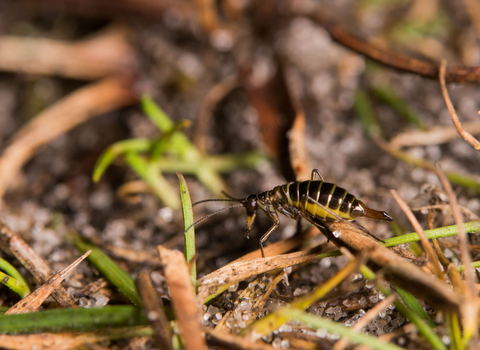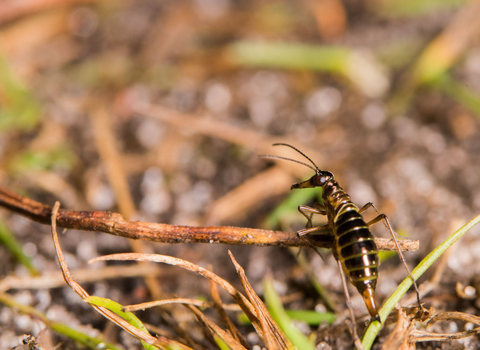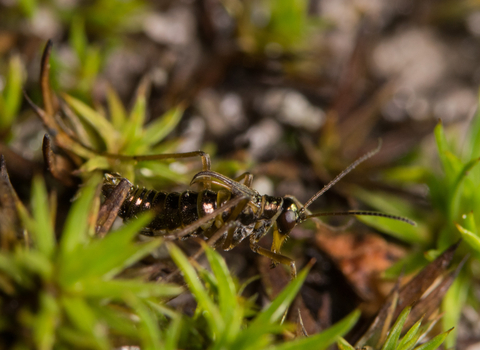
Female snow flea © Brian Eversham

Snow flea © Brian Eversham

Male snow flea © Brian Eversham
Snow flea
This flightless relative of the scorpionfly roams across clumps of moss in winter.
Scientific name
Boreus hyemalisWhen to see
October - AprilTop facts
About
Despite their name, snow fleas aren't fleas - though they are thought to be related to them. They belong to the order Mecoptera, which is sometimes known as the scorpionflies. Unlike the more common scorpionflies seen in spring and summer, adult snow fleas are active in the winter months. Another difference is that snow fleas can't fly as they don't have functioning wings. Instead, the wings of male snow fleas have turned into curved hooks that help them cling to females.They're usually found on clumps of moss in woodlands or on heathland. They can also sometimes be seen crawling or jumping over snow (earning the name snow flea). They jump to escape predators and will often make several jumps in a row, changing direction each time.
